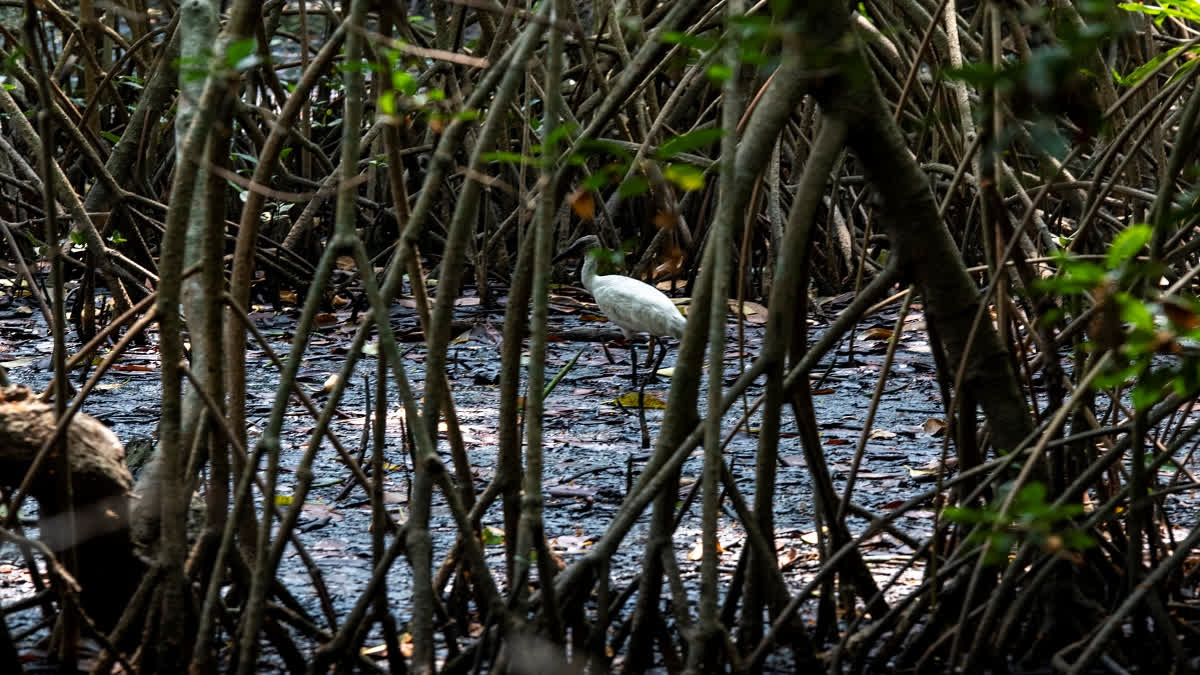Kochi(Kerala):Burrowed between mangroves and a bustling skyline, 70-year-old Rajan, who only uses one name, reminisces about his old home. For nearly sixty years, Rajan has lived comfortably among the trees in Mangalavanam forest in India’s southern Kerala state. In the last two decades, the surrounding city of Kochi has boomed as the state’s financial capital and swallowed up once-protected green areas, including Rajan’s former home.
He was forced to sell his land to a local private realtor when the area was bought up for construction about 15 years ago. He moved into a makeshift dwelling on the edge of a protected bird sanctuary. “Now there are buildings all around and no wind,” said Rajan, adding that the towering concrete has made the city and forest stifling hot.
Government buildings, private offices and homes have sprung up at pace, cutting deep into the forest known as the “green lung of Kochi.” The trees are now squeezed on all sides by buildings, construction and smog. Environmentalists are concerned over the loss and declining health of mangrove cover, which is particularly effective at sucking planet-warming carbon dioxide out of the air, can fend off scorching heat for nearby residents and sustains populations of local wildlife.
Officials and developers alike defend the need to house the state’s dense population and harness economic growth in the world’s soon-to-be most populous nation, but experts say this cannot come at the cost of green spaces.
Kerala has lost nearly 98% of its mangrove forests, shrinking from 700 square kilometers (270 square miles) to just 17 square kilometers (6.5 square miles) since 1975, according to figures from the Kerala Forest Research Institute. Mangrove cover across the country creeped up slightly between 2017 to 2019 at a rate of 0.5% per year thanks to concerted efforts by the government with restoration and maintenance projects springing up in Kerala and beyond.
“I had literally fought with the government to come out with plans to protect the mangrove forests,” said Kathireshan Kandasamy, who studies India’s mangrove forests and is a former member of the National Mangrove Committee, a body set up by the government to advise on conservation.
In 2022 the Indian government, following Kandasamy and the committee’s advice, identified 44 critical mangrove ecosystems in the country, including two in Kerala. It launched a management action plan to protect and maintain the areas. State governments also started sanctioning funds for conservation projects.
The shrunken Mangalavanam is now listed as a protected area, but there are concerns about the impact of nearby development. “I found out that some city drainage is passing through this mangrove ecosystem,” said Rani Varghese, a research scholar at the Kerala University of Fisheries and Ocean Studies. Varghese said the runoff “is changing its whole ecosystem.”
While the trees themselves are still sucking planet-warming carbon dioxide out of the air, Varghese explained, effluents and pollutants in the soil hamper how good of a sink for carbon the soil can be. With record amounts of carbon dioxide being pumped into the air by human activity, maintaining ecosystems like mangrove forests can counteract some of the harms of warming.
